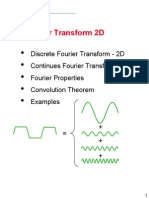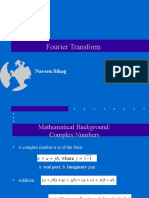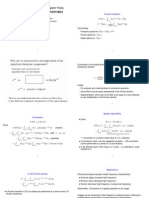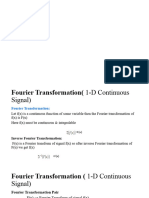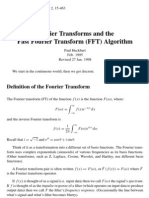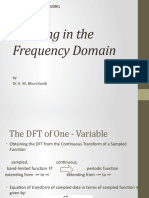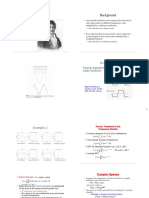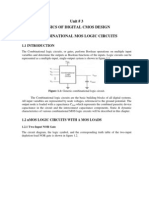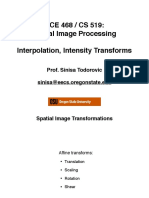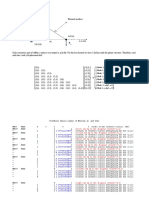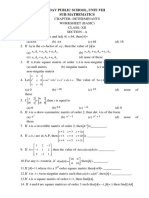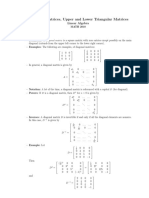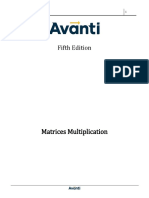0% found this document useful (0 votes)
82 views9 pages03 - Image Transforms
Separability gives rise to processing advantages in the computer. The transform may be performed as a single dimensional computation on the rows and columns. A separable transform can be written as: the kernel is symmetric if:.
Uploaded by
rajendrasoloniCopyright
© Attribution Non-Commercial (BY-NC)
We take content rights seriously. If you suspect this is your content, claim it here.
Available Formats
Download as PDF, TXT or read online on Scribd
0% found this document useful (0 votes)
82 views9 pages03 - Image Transforms
Separability gives rise to processing advantages in the computer. The transform may be performed as a single dimensional computation on the rows and columns. A separable transform can be written as: the kernel is symmetric if:.
Uploaded by
rajendrasoloniCopyright
© Attribution Non-Commercial (BY-NC)
We take content rights seriously. If you suspect this is your content, claim it here.
Available Formats
Download as PDF, TXT or read online on Scribd
/ 9
